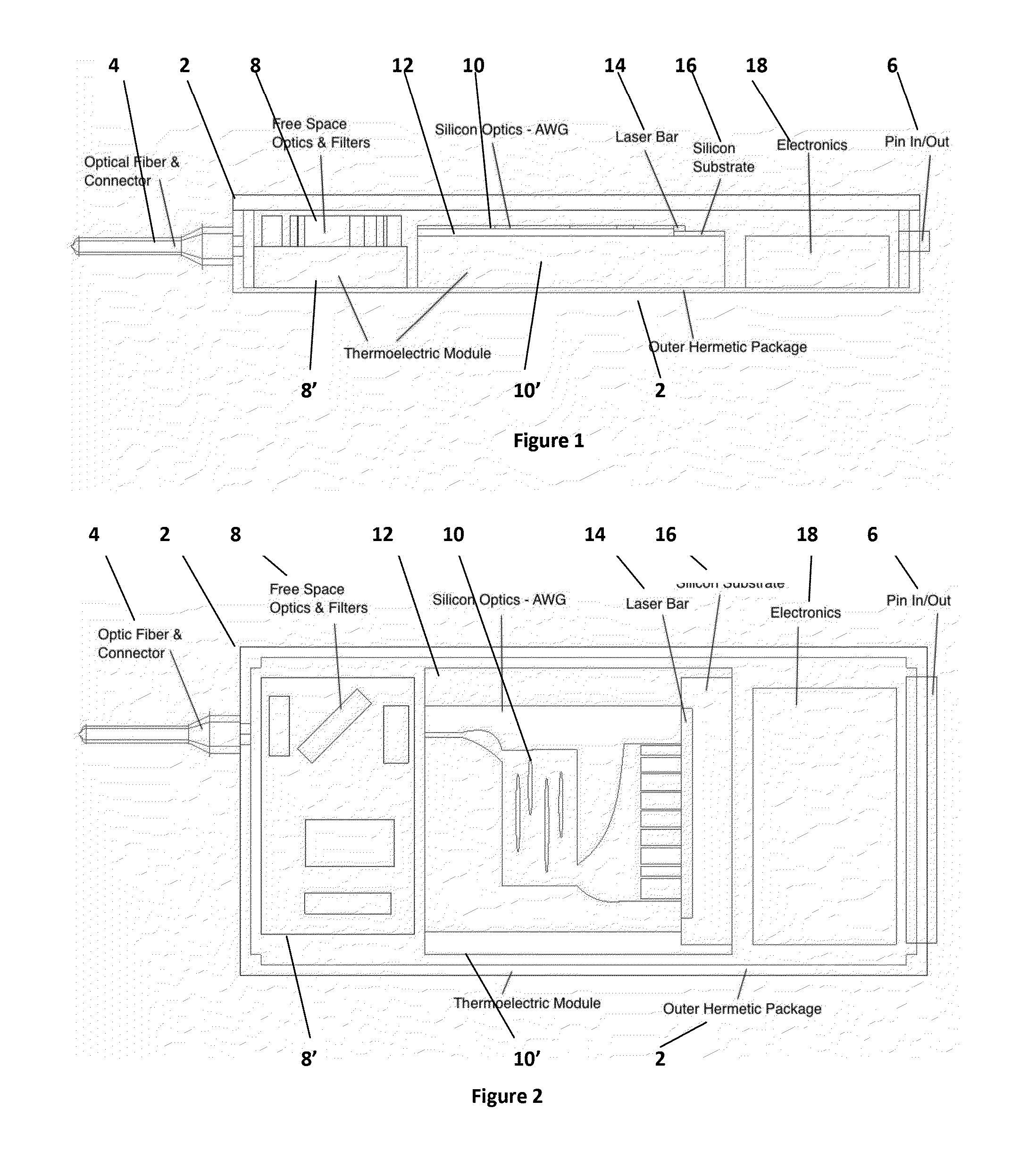Thermal management of photonics assemblies
a technology of photonics and thermal management, applied in semiconductor lasers, semiconductor/solid-state device details, lighting and heating apparatus, etc., to achieve the effect of efficient isolation of photonics assemblies and dissipation of heat load generated
- Summary
- Abstract
- Description
- Claims
- Application Information
AI Technical Summary
Benefits of technology
Problems solved by technology
Method used
Image
Examples
first embodiment
[0035]Referring now to the invention shown in FIGS. 3, 4 and 5, similar parts to those of FIGS. 1 and 2 are denoted by the same reference numeral. An outer open container 20 of thermally isolating plastic material receives a registering base portion 22 of a hermetic package 24 (shown in exploded form in FIG. 5), of a thermally conductive metallic material. A top surface 26 of thermally insulating material completes both the hermetic package, and the outer container. The layout of the electronic and photonic components is similar to that of FIGS. 1 and 2, and it may be seen from FIG. 5 that units 8-18 together comprise a single composite assembly 17, with the conductive silicon substrate of each unit 8-18 forming a composite thermally conductive substrate assembly 19. The substrate assembly may be separate substrate units or joined together units, or be formed as an integral unit.
[0036]Fluidic cooling of the components is provided as follows. Between container structure 20 and base 2...
second embodiment
[0037]Referring now to the second embodiment shown in FIGS. 6 to 11, similar parts to those of FIGS. 3 to 5 are denoted by the same reference numerals. Referring firstly to FIG. 8, the outer container 20 has a top cover 27 of insulating material, with side flanges 29 which overlap base 20, to completely envelope sealed container 24. In this case top 26 of container 24 may be thermally conductive. For clarity, top 27 is not shown in FIGS. 6 and 7.
[0038]In FIG. 6, recess 36 of FIG. 3 has been modified as a first recess 42 beneath waveguides 12 separated by an intervening wall from a second recess 44 disposed beneath laser bar 14. Although the base 22 retains the hermetic seal of the first embodiment, the upper floor of each recess is formed with internal inlet and outlet fluid flow paths, directed to the electronics and photonics components. Thus in recess 38, see FIGS. 6 and 9, fluid flow paths 48 are provided for conducting fluid into contact with electronics components. In recess 4...
PUM
 Login to View More
Login to View More Abstract
Description
Claims
Application Information
 Login to View More
Login to View More - R&D
- Intellectual Property
- Life Sciences
- Materials
- Tech Scout
- Unparalleled Data Quality
- Higher Quality Content
- 60% Fewer Hallucinations
Browse by: Latest US Patents, China's latest patents, Technical Efficacy Thesaurus, Application Domain, Technology Topic, Popular Technical Reports.
© 2025 PatSnap. All rights reserved.Legal|Privacy policy|Modern Slavery Act Transparency Statement|Sitemap|About US| Contact US: help@patsnap.com



